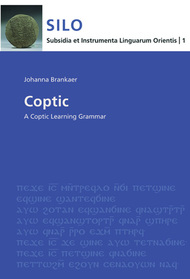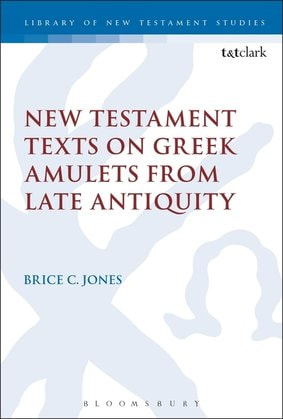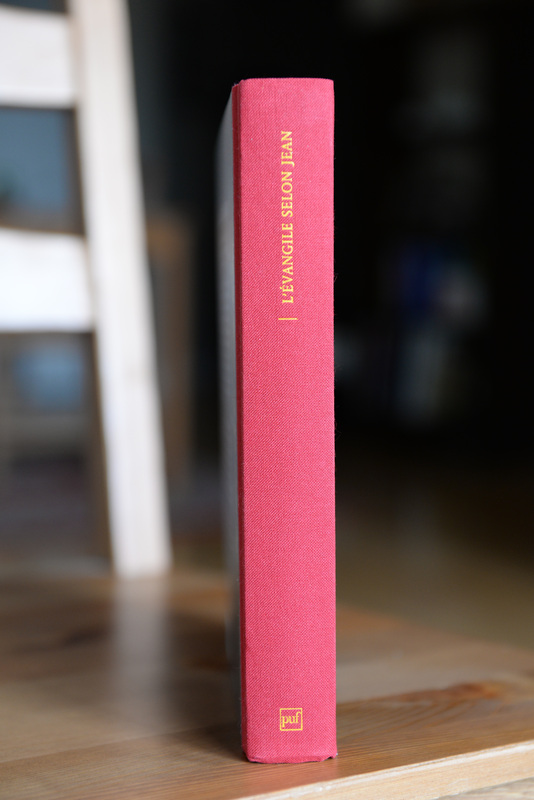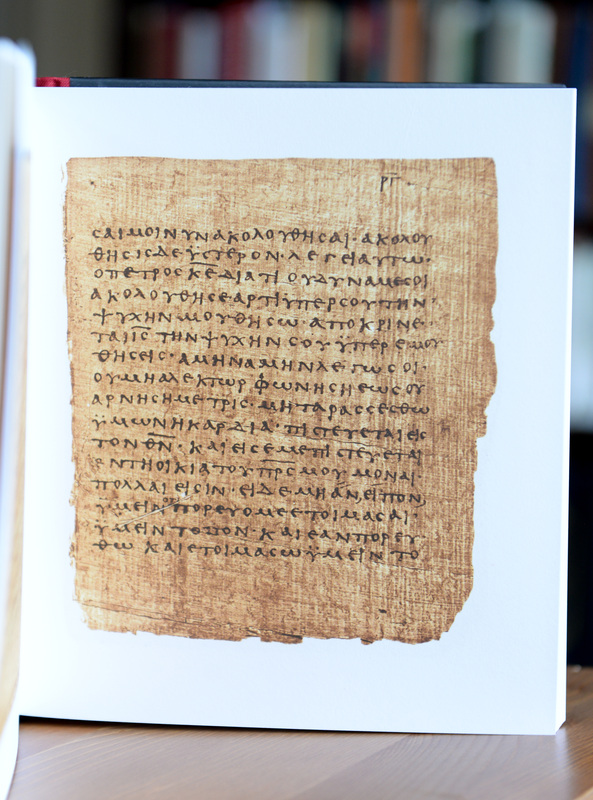 My review of Johanna Brankaer's Coptic: A Learning Grammar (Sahidic) (SILO 1. Wiesbaden: Harrassowitz, 2010) has been published in Laval théologique et philosophique 69. You may find an electronic offprint here. Coptic: A Le. SILO 1.Wiesbaden:Harrassowitz, 2010.
0 Comments
 Only recently did I become aware of a nice hardback facsimile edition of P.Bodmer II (P66; Gospel of John) titled L'évangile selon Jean: Introduction et traduction de Jean Zumstein (Paris: Presses Universitaires de France, 2008). This is an interesting publication for several reasons. First, the title is misleading. It is not merely a book on the Gospel of John. It is really, in fact, a full, colored photographic facsimile of P.Bodmer II, with a general introduction to the Gospel of John at the beginning (pp. 9-48) and a French translation of P.Bodmer II at the back (pp. 205-257). Second, it would appear that the photographs are digitally manipulated scans of the 1962 plates published by Victor Martin (Cologny-Genève, Bibliothèque Bodmer). Thus, the 1962 black and white images are slightly clearer, so hang onto those. (I have really, really high-res scans of these which have come in handy over the last couple years!) Nonetheless, the quality of this book is really nice. It has a red cloth spine, the binding is really solid, and the pages are quite thick and durable. Each codex page takes up an entire page of the book, and there is no additional text to the page. It would have been nice to have the pagination and content of each page listed at the top or bottom (cf. the 1962 plates), but at least the pagination can easily be read on the papyrus itself (where it is present). The introductory essay on the Fourth Gospel by Zumstein is also very good reading, although I feel that an introductory essay on P.Bodmer II would have been more appropriate given that this is a photographic facsimile. Anyway, be sure to check out this facsimile. It is a must-have for anyone working on ancient manuscripts. And the price is very reasonable (€28). Here are a few images:  Thomas A. Wayment, The Text of the New Testament Apocrypha (100–400 CE). New York and London: Bloomsbury, 2013. Xii + 409 pp. Hardback. $220. I would like to express my utmost appreciation to the kind folks at Bloomsbury for sending me a review copy of this book. I am very happy to review this book by Thomas Wayment on the Text of the New Testament Apocrypha. It presents a collection of early Christian apocrypha from the first five centuries of the Common Era with Greek texts and complete images of individual manuscripts. Some of the texts include the Epistle of the Barnabas, Didache, Gospel of Mary, Gospel of Peter, Infancy Gospel of James, and Sherpherd of Hermas. The book consists of a very brief introduction (pp. 1-4), Greek texts with introductions to each category (pp. 9-197), a nice bibliography (pp. 199-205), an index of Greek words (pp. 207-210), and images (pp. 213-409). Although surprisingly not mentioned anywhere in or on the covers of the book, the beautiful papyrus featured on the cover is P.Hamburg 1, p. 7 (Acts of Paul). The book is large and heavy and the pages are nice and thick. In producing a work like this, one is always faced with the decision over which texts to include and which ones to exclude. Moreover, given the variety of early Christian apocrypha, there is also a challenge of how to group these texts into categories and sub-categories (e.g., gospels, sayings gospels, acts), and the author is not unaware of these problems (see the introduction). The introduction provides an explanation for delimitation and underscores the significance of apocryphal research today. The bulk of this book is comprised of manuscript entries, Greek texts, and manuscript images, so the rest of this review will focus on each, respectively. Each manuscript entry contains various components: inventory number set in bold, title, date, bibliography (not exhaustive), provenance, editio princeps, location, notes, list of nomina sacra, followed by the transcriptions. One will notice that there are occasional inconsistencies in the employment of these subsections. For example, the entry on P.Berlin 13893 + P.Mich. 1317 + P.Mich. 3788 (p. 17) lacks the subsection of “location,” and the entry of PSI I 6 and 7 lacks the subsection of “nomina sacra,” even though there is a nomen sacrum in the text (fr. 5a, verso). The entry on P.Egerton 2 and P.Köln 255 (p. 180) contains an additional subsection of “other editions,” but it is not employed elsewhere. It is unfortunate that the sublinear dots in the transcriptions are not always centered underneath the letter. This is an all too common problem with word processors but it is almost always corrected in the typesetting stages of manuscript production. The placement of the dot under some letters is quite acceptable, but with others, it shifts away from center, most notably iota. A standard Greek font is used and the accents are clear. There are two different fonts used for the editorial sign indicating an interlinear addition (`´), as can be seen by comparing P.Bodmer 5, p. 48, l. 6, verso (p. 72) and P.Yale 1376, l. 8, recto (p. 34). The editorial sign indicating a deletion in the original, listed at the beginning of the book, is not found elsewhere; the dots there should be corrected to double square brackets, which do occur in the texts. Spelling errors in the original have been corrected in the transcriptions but they are noted below the transcriptions along with the abbreviation “pap.” to indicate that that reading is found in the papyrus. Ancient pagination is preserved. Nomina sacra are resolved, the abbreviated portions being placed within parentheses. Sometimes arrows are employed to indicate fiber orientation (→, ↑) but other times they are not (for example, cf. P.Bodmer 5 and P.Ashmolean inv. 9). Diplai occurring in the original manuscript to signal a quotation have been included in the transcriptions, as have diplai used as line fillers, except that the latter are sometimes omitted (e.g., P.Bodmer 5, p. 2 verso, l. 15). Spot checks reveal that the transcriptions are very accurate. It is probably true that many (most?) people will purchase this book merely for the images. There are nearly 200 manuscript images, a feature alone that merits a place on the bookshelf. It would be nice to have percentages marking the amount of reduction or enlargement of the photos, but that would have required a lot of additional work on the part of Wayment. Most of the images are very clear, but some are blurry (P.Mich. 13893, P.Mich. 1317, P.Mich. 3788, P.Schøyen MS.2634.1, P.Köln 255, P.Iand I 4). P.Oxy. XIII 1602 is too dark. The finest images are those of P.Bodmer 5 (Infancy Gospel of James)—some real eye candy! According to the introduction, “Some of the photographs are new and others have not been made available outside of a small circle of specialists in New Testament papyrology” (p. 4). In sum, if there were a “Reference Book of the Year,” in my opinion, this is it. This is a fine collection of apocryphal Greek texts and manuscript images that will serve the field for many, many years to come. We all owe a debt of gratitude to Wayment for his superb efforts in producing such a volume, a task that is not for the faint of heart. I myself am working on a catalogue of transcriptions from many different manuscripts and fully understand how burdensome it is to track down editions that are not readily available and request manuscript reproductions from various libraries, museums, and private collections from all over the world. Any shortcomings must be forgiven in light of these considerations. This book is a critical scholarly tool that will be consulted by scholars in a variety of disciplines, such as New Testament and Early Christian studies, New Testament textual criticism, palaeography, codicology, papyrology, etc. I heartily welcome the book and look forward to using it. You can purchase this book here. I would like to express my utmost appreciation to the kind folks at Harrassowitz Verlag for sending me a review copy of this book. Because Coptic does not display properly in all browsers, I have uploaded a PDF of this review, which is posted below and which may alternatively be downloaded here. Update: This review has also appeared in the journal Laval Théologiques et Philosophique 63.2 (2013). See here. |

Available at Amazon!
Archives
December 2020
Categories
All
|



